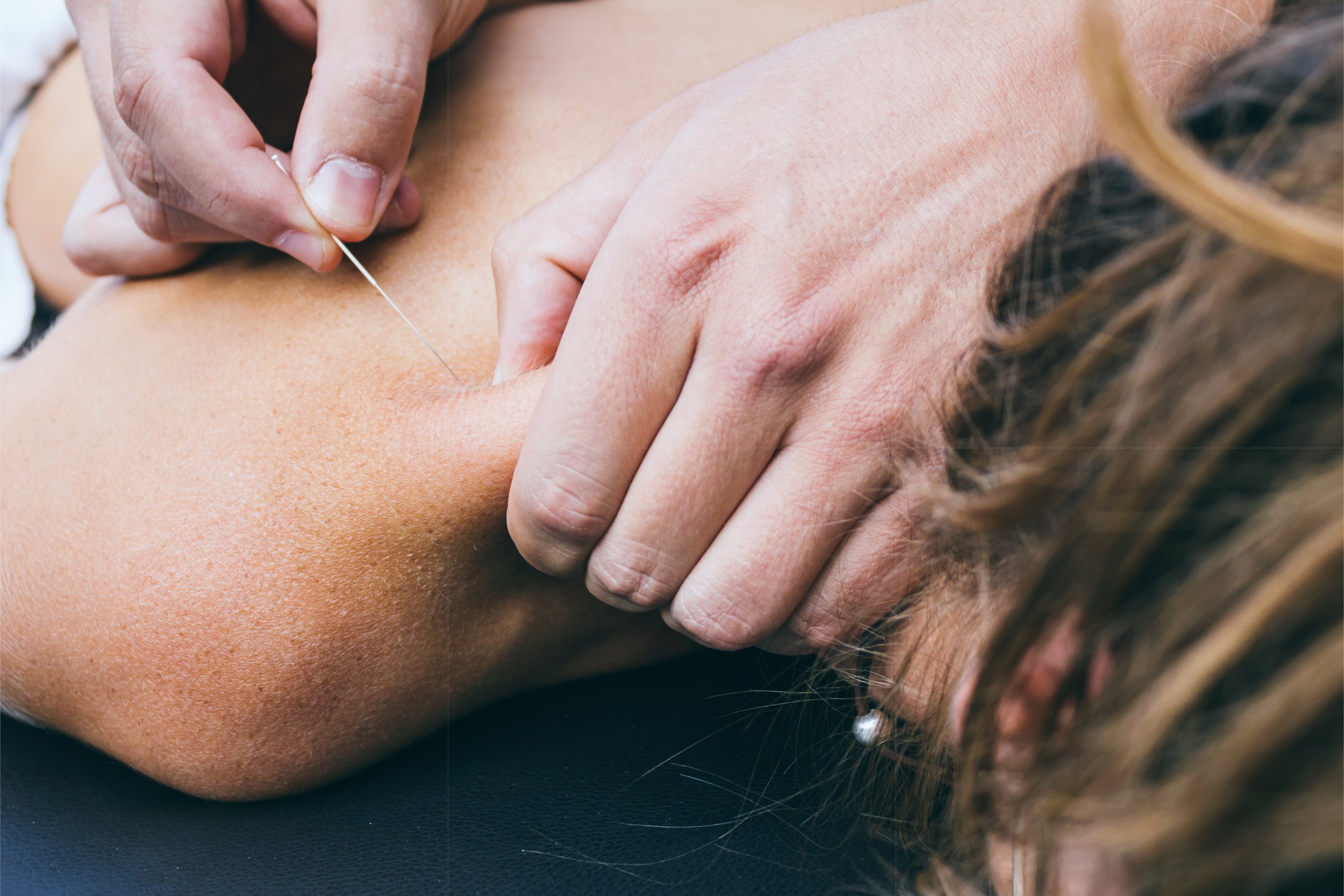How Dry Needling Can Help You Recover From Pain
Dry needling is a treatment approach for myofascial pain and neuromuscular dysfunction. It involves inserting a sterile needle directly into a painful point along a muscle fibre. Targeting these points, also known as “trigger points”, elicit a twitch response that in turn relaxes the taught muscle. This treatment has been proven to help decrease pain, increase range of motion, and restore function.
Trigger points (TrPs) are uniquely developed in each muscle, and have associated distinctive referral patterns of pain. They can develop in a single muscle, or a group of muscles, as a direct result of injury to the fibres from trauma, repetitive motion, or periods of immobility (such as wearing a cast). Trigger points prevent full lengthening of the muscle, leading to weakness, and improper activation. There are two types of TrPs: active and latent. Active TrPs spontaneously produce local pain to the area of injury, and can refer pain further away from the source. Latent TrPs are not painful until stimulated by touch, but can still cause symptoms such as muscle weakness and limited range of motion.
What can cause trigger points to develop?
Some contributing factors to TrP development can be trauma, such an injury eg. ankle sprain, hamstring strain, or a quadriceps contusions. Other mechanical factors such as poor posture or ergonomics cause muscles to undertake frequent and improper loads that also attribute to tender points. Conditions such as arthritis that lead to degeneration can be a factor, along with emotional stress as muscular tension often rises.
What should I expect during and after treatment?
Like any other form of needling technique, there is a small expected amount of discomfort. Although common, discomfort caused from dry needling should be tolerable and if not the treatment can be quickly stopped. There are also some people that are not bothered in the least so it is very individual! So what will happen? First the practitioner must find the tender point within the muscle, and determine the size and quantity of TrPs. During the physical needling process, the needle is only in the muscle for a few seconds. The practitioner will piston the needle in and out to ensure proper release of the trigger point and then apply steady pressure once the needle is removed to decrease residual pain. Afterwards you will notice that the muscle feels tired, as if it has been worked out quite well. I encourage all my patients to keep the muscle moving for the rest of the day, and stay consistent with stretching it out. This will ensure that the muscle reaches the target length and maintains improvement in range of motion and function. Often by the next day you feel great and are eager to do it all over again! I look at it like a quick deep tissue massage with amazing results!

